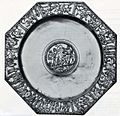Kaiseraugst facts for kids
Quick facts for kids
Kaiseraugst
|
||
|---|---|---|

Kaiseraugst village center
|
||
|
||
| Country | Switzerland | |
| Canton | Aargau | |
| District | Rheinfelden | |
| Area | ||
| • Total | 4.9 km2 (1.9 sq mi) | |
| Elevation | 269 m (883 ft) | |
| Population
(Dec 2020 )
|
||
| • Total | 5,550 | |
| • Density | 1,133/km2 (2,930/sq mi) | |
| Postal code |
4303
|
|
| Surrounded by | Augst (BL), Giebenach (BL), Grenzach-Wyhlen (DE-BW), Olsberg, Rheinfelden (DE-BW), Rheinfelden | |
Kaiseraugst is a town in Switzerland. It is located in the canton of Aargau, which is like a state. The town is part of the Rheinfelden district.
Kaiseraugst gets its name from an old Ancient Roman city called Augusta Raurica. The ruins of this ancient city are very close by. The word Kaiser- means "imperial" or "emperor's." This part of the name shows that Kaiseraugst was once part of the Habsburg Empire. This was different from the nearby village of Augst, which belonged to another Swiss area.
Contents
History of Kaiseraugst
Around the year 300 AD, the Roman army built a fort near the city of Augusta Raurica. This fort was called Castrum Rauracense. It was built to protect a crossing point over the Rhine river. It also served as a base for a Roman army group.
During the 4th century, the fort became very important. It controlled a bridge that was part of a main road from Gaul (modern France) to the Danube river. Around 337 to 341 AD, an amphitheater was built here. It is believed to be the newest Roman amphitheater ever found. Roman Emperors Constantius II and Julian gathered their armies at this fort before going to battle.
After the Roman Empire declined, local Germanic tribes moved into the fort. The fort and a nearby church became the home of a bishop in the 4th century. However, in the 7th century, the bishop moved to Basel. After this, the settlement became less important.
A village named Augusta was first mentioned in 752. But it wasn't until 1442 that this village split into two separate places: Augst and Kaiseraugst.
In 894, King Arnulf gave the church in Kaiseraugst to one of his nobles. Over time, the church was given to different religious groups. The original church, built around 400 AD, was replaced in 1749. In 1803, the church became part of the new Aargau canton. Later, in 1878, most people in Kaiseraugst became Christian Catholic. They took over the old church building. A new Roman Catholic church was built in 1900-1901.
In the early 1960s, there were plans to build a nuclear power plant in Kaiseraugst. Many people were against this project. In 1975, people even protested by occupying the building site. After the Chernobyl disaster in 1986, the Swiss government and the power company agreed to stop the project.
Geography and Landscape
Kaiseraugst covers an area of about 4.91 square kilometers (1.9 square miles). A good part of this land, about 20%, is used for farming. Forests cover about 32% of the area. Buildings and roads make up about 41% of the land. Rivers and streams cover about 6.5%.
The town is located in the Rheinfelden district, right along the Rhine river.
Town Symbol
The coat of arms for Kaiseraugst shows a silver watch tower on a red background. This symbol represents the town.
Population and People
Kaiseraugst has a population of about 5,500 people (as of 2022). About a quarter of the people living here are from other countries. Most people in Kaiseraugst speak German. Italian is the second most common language, followed by French.
The population has grown quite a lot over the years. For example, in 1758, there were only 215 people. By 2000, the population was 3,917.
Important Historical Sites
The ancient Roman city of Augusta Raurica, along with the Castrum Rauracense fort, is a very important historical site in Switzerland. The entire village of Kaiseraugst is also recognized as a special heritage site.
In December 2021, a Roman amphitheater was found during construction work in Kaiseraugst. It was likely built in the 4th century AD. This discovery makes it the newest Roman amphitheater known.
Economy and Jobs
In Kaiseraugst, some people work in farming. However, most jobs are in the manufacturing industry. This includes factories and businesses that make things. Many other people work in the service industry, like shops, offices, and healthcare.
Many people who live in Kaiseraugst travel outside the town for work. Also, many people from other places come into Kaiseraugst for their jobs. About a quarter of workers use public transport to get to work, while almost half use a private car.
Religion
Based on a 2000 survey, about 30.9% of people in Kaiseraugst were Roman Catholic. About 35.8% belonged to the Swiss Reformed Church. A smaller number of people were part of the Christian Catholic faith.
Transportation
Kaiseraugst is on the Bözberg railway line. This means it has a train station, Kaiseraugst railway station. It is served by the Basel S-Bahn, which is a local train system.
Education
Most adults in Kaiseraugst have completed a good level of education. This includes high school or even higher education like university.
In the 2008/2009 school year, there were 395 students in primary school. There were also 123 students in secondary school.
Kaiseraugst has a public library called Gemeindebibliothek Violahof. In 2008, the library had over 7,000 books and other items. It loaned out more than 15,000 items that year.
Images for kids
-
A silver plate showing Achilles from Augusta Raurica
See also
 In Spanish: Kaiseraugst para niños
In Spanish: Kaiseraugst para niños









